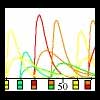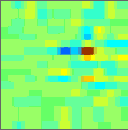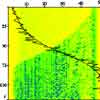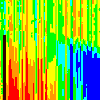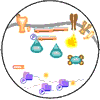Theoretical Neuroscience
The theoretical neuroscience group at NSI seeks to develop mathematical methods, both analytical and numerical, to aid in our understanding of the nervous system. Methods are applied to all levels of biological systems, from the molecular to the behavioral.
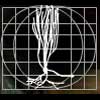 |
Outreach Presentation: The Art of Mathematical Models |
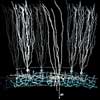 |
Presentation: Research Activities in Theoretical Neuroscience at NSI |
Projects: (Supported by grants from NSF and NIMH: Acknowledgments)
Electrosensory Processing in Mormyrid electric fish (in collaboration with Dr. Curtis Bell)
Introduction to the electrosensory system of mormyrid electric fish.
Presentation: Mutual Inhibition Increases Adaptation Rate in an Electrosensory System.
Poster: Computational consequences of temporal order in synaptic plasticity.
Active control of spike-timing dependent synaptic plasticity.
Presentation: Modeling electrosensory processing in mormyrid electric fishMathematical methods of theoretical neuroscience.
Stochastic Approaches to Biological Physics: Electrosensory Adaptation
Auditory Processing in the Mammalian Brainstem and Mid-brain (in collaboration with Dr. Christine Portfors)
Learning dynamics of brainstem auditory processing.
Poster: Adaptive Auditory Processing in the Dorsal Cochlear Nucleus.Neural responses in the mouse auditory brainstem.
Poster: Spike Response Mechanisms of Cell Types in the Dorsal Cochlear Nucleus.Quantification of frequency interactions in the bat inferior colliculus.
Poster: Modeling Responses to Social Vocalizations in the Inferior Colliculus of the Mustached Bat.
Spike-Time Dependent Synaptic Plasticity
Learning dynamics and mechanisms of spike-timing dependent synaptic plasticity.
Poster: Dynamics of temporal learning rules in adaptive biological networks.Spike-Time Dependent Synaptic Plasticity in an Electrosensory System
Presentation at the Institute of Theoretical Physics (Nov 01, 2001).Learning dynamics of recurrent neural network.
Poster: Recurrent Neural Network Generates a Basis for Sensory Image Cancellation.
Dynamics of neural activity in the cerebellum (in collaboration with Dr. Neal Barmack).
Simulation tools:
Java code for spike-response models used in simulations.
Members of the theory group:
Past projects:
Pattern generation in small neural circuits.
Poster: Temporal pattern generation in dynamic biological networks.Analysis of human movement.
Poster: The dynamics of rising from a seated position.
Past members of the theory group:
Kunal Dalal (summer student, 2001)
Presentation: How does internal calcium concentration relate to spike-timing dependent synaptic plasticity?Evan Vickers (Reed College thesis student and summer student, 2001-2002)
Thesis: Computational modeling of the active electrosensory system in a weakly electric fish, Gnathonemus petersii
Preprint: Burst duration representation of timing: modeling coincidence detection in cerebellum-Like granular cellsOwen Gross (Reed College thesis student and summer student, 2003-2004)
Thesis: Biophysical Mechanisms of Spike Generation in Direction SelectiveGanglion Cells

